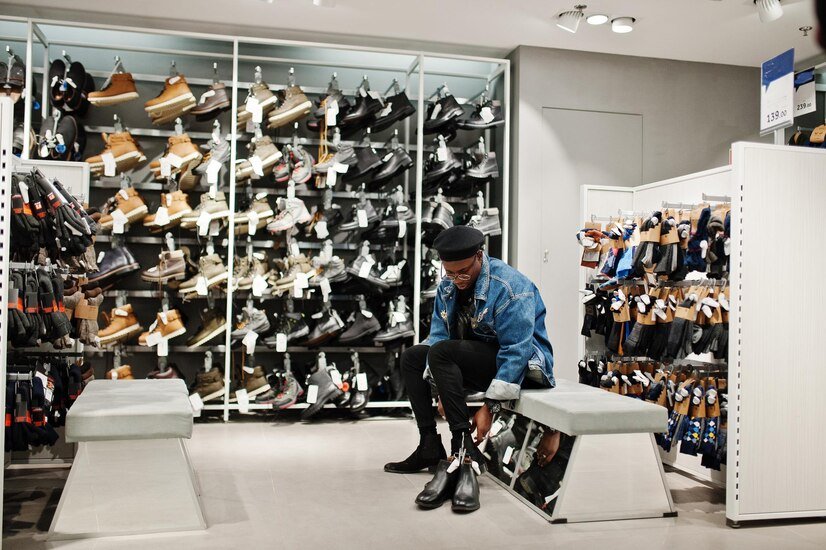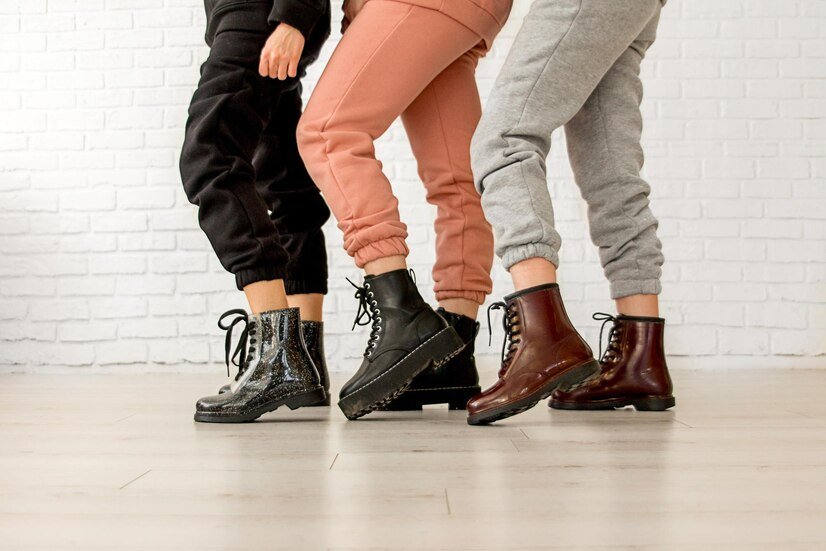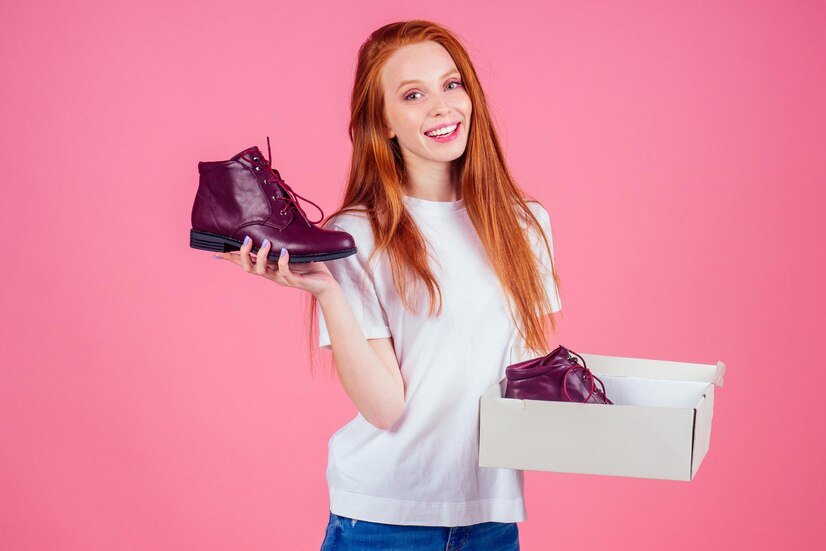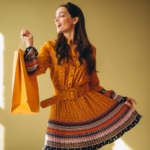Shoe shopping is an essential part of maintaining a well-rounded wardrobe, but it can also feel overwhelming given the vast array of styles, designs, and brands available today. Whether you’re preparing for a special event, updating your seasonal wardrobe, or just replacing worn-out shoes, knowing how to choose the right pair for your needs is crucial. In this guide, we will walk you through key factors to consider when selecting shoes, including style, fit, comfort, and functionality, helping you make informed decisions.
Understanding the Different Types of Shoes

Before diving into the specifics of how to choose the right style, it’s important to familiarize yourself with the different types of shoes available. This knowledge will make it easier for you to narrow down your options based on your personal preferences, lifestyle, and needs.
1. Sneakers
Sneakers are versatile and comfortable shoes that are perfect for everyday wear. They’re available in various designs, from athletic sneakers for physical activity to fashion-forward options for casual outfits. Sneakers are great for those who prioritize comfort and need a shoe that can keep up with a busy lifestyle.
2. Boots
Boots are a staple in any wardrobe, especially in cooler weather. They range from ankle boots to knee-high and even thigh-high boots. There are also various materials, such as leather, suede, and synthetic options, making it easy to find a pair that suits your style and needs.
3. Flats
Flats are comfortable and stylish shoes that provide a simple, yet elegant, look. Ballet flats, loafers, and slip-on shoes are popular flat options. Flats are perfect for casual outings or more formal occasions when you want a classic, polished look without the discomfort of heels.
4. Heels
Heels are a go-to for formal events or when you want to elevate your outfit. High heels come in many shapes and sizes, from stilettos to block heels, and they can be worn for both casual and professional settings. While they add sophistication, it’s essential to choose a pair that offers comfort and stability.
5. Sandals
Sandals are ideal for warm-weather months and can be dressed up or down. From flip-flops for the beach to strappy heels for a night out, sandals come in an array of styles that provide comfort and breathability.
6. Loafers
Loafers are slip-on shoes that blend comfort and style. They’re great for both men and women and can be worn in casual and semi-formal settings. Loafers come in a variety of designs, including classic penny loafers, moccasins, and modern slip-on versions.
Factors to Consider When Shoe Shopping

Now that you’re familiar with the types of shoes available, let’s dive into the key factors you should consider when choosing the right style.
1. Your Lifestyle and Activities
Your lifestyle plays a significant role in determining the type of shoes you should buy. Consider your daily routine and the activities you engage in regularly. Are you walking a lot? Do you stand for long periods? Do you need shoes for physical activities, or are you mostly in the office or at social gatherings?
- For active lifestyles: Sneakers, running shoes, or hiking boots might be the best choice.
- For office settings: Loafers, flats, or low heels offer a polished, professional appearance.
- For formal events: High heels, dress shoes, or boots can elevate your outfit.
- For casual outings: Comfortable flats, sandals, or stylish sneakers work well.
2. Comfort and Fit
Comfort is one of the most important considerations when shoe shopping. Ill-fitting shoes can cause blisters, discomfort, and long-term foot problems. Always make sure to measure your feet before purchasing shoes, as foot size can change over time due to factors like age, pregnancy, and lifestyle changes.
When trying on shoes, pay attention to the following:
- Arch support: Look for shoes that provide adequate arch support to prevent foot strain.
- Cushioning: Opt for shoes with adequate cushioning to absorb shock and provide comfort throughout the day.
- Width and length: Ensure the shoes fit both the width and length of your foot properly. Shoes that are too tight or too loose can cause discomfort.
3. Material
The material of the shoe is another important factor to consider. Different materials offer varying levels of comfort, durability, and breathability.
- Leather: Leather shoes are durable and provide a sophisticated appearance. They can mold to the shape of your feet over time, offering a customized fit.
- Suede: Suede is soft and luxurious but requires more care and attention to maintain its appearance.
- Synthetic materials: Synthetic shoes are often more affordable and can mimic the appearance of leather and suede. They may not be as breathable as natural materials but can be suitable for certain styles.
- Mesh and knit fabrics: These materials are lightweight and breathable, making them ideal for sneakers and athletic shoes.
4. Versatility
Consider how versatile the shoes are. Can they be worn for multiple occasions? For example, a pair of black flats or a pair of neutral-colored loafers can be dressed up or down depending on the event. Choosing shoes that match various outfits ensures you get the most use out of them.
5. Heel Height and Type
If you’re considering heels, think about the height and type that best suits your needs. While stilettos can add glamour to an outfit, they may not be the best option if you need to be on your feet for extended periods. Opt for block heels or wedges if you’re looking for comfort without sacrificing style.
6. Durability and Maintenance
Shoe durability is another important factor, especially if you wear them often. Leather shoes may need occasional polishing, while sneakers might require cleaning after regular use. Make sure you understand the care instructions for the material of the shoes you’re considering to ensure they last for as long as possible.
7. Budget
While it’s tempting to splurge on trendy or luxury shoes, it’s important to set a budget based on your needs and how much wear you anticipate getting out of the shoes. There are plenty of affordable, stylish, and comfortable options available across various price ranges.
How to Style Different Types of Shoes

Now that you know how to choose shoes based on your lifestyle, comfort, and needs, let’s talk about how to style different types of shoes for various occasions.
Sneakers
- Casual Look: Pair sneakers with jeans, a t-shirt, and a jacket for a laid-back, comfortable look.
- Sporty Look: Combine running shoes or trainers with leggings or athletic wear for a sporty appearance.
- Dressy Casual: Wear high-top sneakers with a midi dress or tailored pants for a fashion-forward, casual look.
Boots
- Fall/Winter Look: Pair ankle boots with skinny jeans or leggings and a cozy sweater for a warm, stylish outfit.
- Edgy Look: Go for knee-high boots with a leather jacket and dark skinny jeans for an edgy vibe.
- Classic Look: Style riding boots with a trench coat or a structured blazer for a sophisticated look.
Flats
- Casual Look: Slip into ballet flats or loafers and pair them with a simple dress or a pair of cropped pants.
- Work Look: Opt for pointed-toe flats in neutral colors and pair them with a tailored suit or pencil skirt for a chic office look.
- Boho Look: Style espadrille flats with a flowy maxi dress for a relaxed, bohemian style.
Heels
- Night Out Look: Wear stilettos with a cocktail dress for a glamorous night out.
- Work Look: Choose block heels or kitten heels with a pencil skirt or tailored pants for a comfortable yet professional appearance.
- Weekend Look: Pair block heels with a maxi dress or tailored pants for a weekend brunch or outing.
Sandals
- Casual Look: Wear flat sandals with a sundress or shorts for a breezy, summer look.
- Dressy Look: Opt for heeled sandals to pair with a dress or jumpsuit for a more formal summer event.
- Bohemian Look: Choose gladiator sandals and combine them with a flowy skirt or a boho-chic ensemble.
Also Read : Retail Shopping Vs Online Shopping: Which Is The Better Option?
Conclusion
Choosing the right style of shoes involves considering several factors, including comfort, lifestyle, material, and versatility. By understanding your needs and carefully evaluating each option, you can make informed choices that align with your personal style and functional requirements. Remember that the perfect pair of shoes not only enhances your outfit but also provides long-lasting comfort and support.
When shoe shopping, take your time to try on different styles, walk around in them, and think about how they’ll fit into your daily life. Ultimately, the best shoes are the ones that make you feel confident, comfortable, and ready to take on the day.
FAQs
How do I know if shoes fit properly?
A well-fitting shoe should feel snug but not tight. There should be enough room to wiggle your toes, but the shoe should not slide around on your foot. Make sure there’s about a half-inch of space between your longest toe and the end of the shoe.
What type of shoes should I wear for long hours of walking?
For long hours of walking, comfort is key. Choose shoes with good arch support, cushioning, and a flexible sole. Sneakers or walking shoes are often the best options for prolonged walking.
How can I make my shoes last longer?
To make your shoes last longer, clean them regularly, store them properly, and repair any damage promptly. Leather shoes should be conditioned to maintain their luster, while sneakers can benefit from routine cleaning.
How do I choose shoes for a formal event?
For formal events, go for elegant heels, dress shoes, or loafers in neutral or metallic shades. Make sure the shoes are comfortable enough to wear for long periods and pair well with your outfit.





